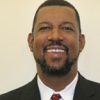Workforce Development for a New Century: Part II
In our last article, we discussed the need for radical changes in our education and workforce development systems to meet the challenges of a 21st century global economy. Both systems have grown out of the 20th century manufacturing-based economy that no longer exists in America.
Our current workforce development system has evolved from a tradition of job training programs that date back to the 1930s. Over most of the 20th century, the American manufacturing economy could thrive on large numbers of low-skilled workers. By the end of the century, however, the economy had changed dramatically into a global “knowledge” economy. Additional challenges also emerged with the quantity, quality, and economic alignment of the workforce to meet the competitive needs of business. It was recognized that the job training programs weren’t sufficient to address these new challenges. By the mid-1990s, the concept of “workforce development” had emerged to knit the patchwork of job training programs into a more comprehensive and effective system.
To be relevant in this century, national, state, and local workforce development systems must:
• Focus on the quantity, quality, and economic alignment of the entire workforce. “Workforce development” differs from “job training” by this broader, more comprehensive definition: do we have enough workers to meet the needs of our economy, do they have the right skills for a 21st century knowledge economy, and does the skill set of our workforce align with the emerging jobs of today and tomorrow? Workforce development also deals with the entire spectrum of the workforce. Do entrant workers—young people transitioning from our educational system into the workforce—have enough education and training for these future jobs? Do transitional workers—individuals transitioning in and out of the workforce at any given time—need to upgrade their skills with additional education and training?
• Be community centered, focusing on the needs of the regional economy and business. Economies are regional; they don’t confine themselves to political boundaries. Workforce systems must operate over areas defined by economic boundaries. They also must retain their local character and oversight by community leaders who reside in the region. State and federal government must continue to play a support role, providing funding, policy, and strategic guidance.
• Think and educate. Workforce boards and systems must continue to research global, national, and regional economic and workforce trends. They must take a leadership role in communicating and educating the community on those trends. They also must develop strategic plans for their regions and communities and promote investment in those strategic priorities.
• Convene and partner. In conjunction with their strategic planning process, workforce boards must build a culture of collaboration and partnership among the major stakeholders in their communities and regions to attract resources and convene key leaders to address workforce development issues. IBI
Our current workforce development system has evolved from a tradition of job training programs that date back to the 1930s. Over most of the 20th century, the American manufacturing economy could thrive on large numbers of low-skilled workers. By the end of the century, however, the economy had changed dramatically into a global “knowledge” economy. Additional challenges also emerged with the quantity, quality, and economic alignment of the workforce to meet the competitive needs of business. It was recognized that the job training programs weren’t sufficient to address these new challenges. By the mid-1990s, the concept of “workforce development” had emerged to knit the patchwork of job training programs into a more comprehensive and effective system.
To be relevant in this century, national, state, and local workforce development systems must:
• Focus on the quantity, quality, and economic alignment of the entire workforce. “Workforce development” differs from “job training” by this broader, more comprehensive definition: do we have enough workers to meet the needs of our economy, do they have the right skills for a 21st century knowledge economy, and does the skill set of our workforce align with the emerging jobs of today and tomorrow? Workforce development also deals with the entire spectrum of the workforce. Do entrant workers—young people transitioning from our educational system into the workforce—have enough education and training for these future jobs? Do transitional workers—individuals transitioning in and out of the workforce at any given time—need to upgrade their skills with additional education and training?
• Be community centered, focusing on the needs of the regional economy and business. Economies are regional; they don’t confine themselves to political boundaries. Workforce systems must operate over areas defined by economic boundaries. They also must retain their local character and oversight by community leaders who reside in the region. State and federal government must continue to play a support role, providing funding, policy, and strategic guidance.
• Think and educate. Workforce boards and systems must continue to research global, national, and regional economic and workforce trends. They must take a leadership role in communicating and educating the community on those trends. They also must develop strategic plans for their regions and communities and promote investment in those strategic priorities.
• Convene and partner. In conjunction with their strategic planning process, workforce boards must build a culture of collaboration and partnership among the major stakeholders in their communities and regions to attract resources and convene key leaders to address workforce development issues. IBI

